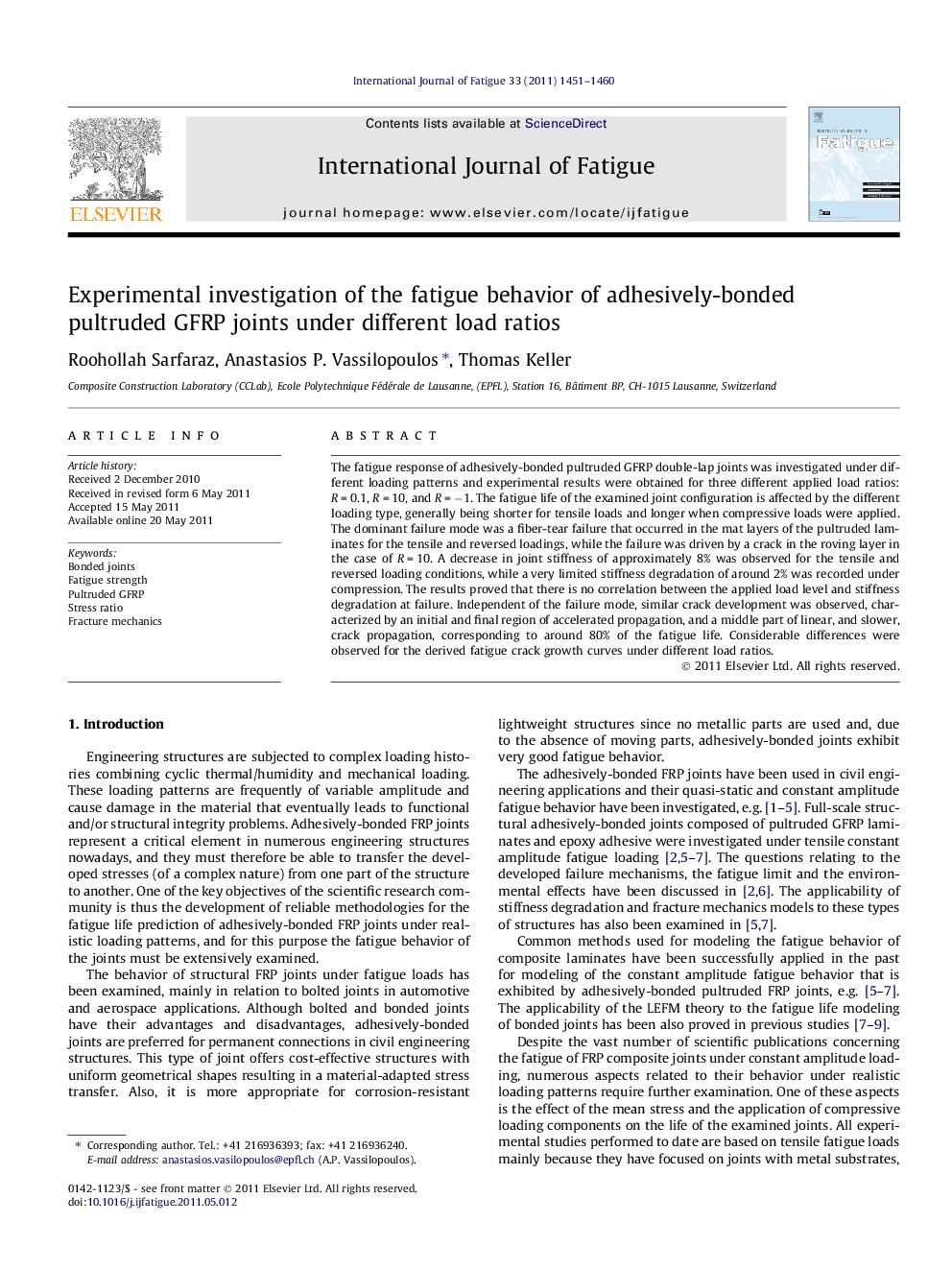| Article ID | Journal | Published Year | Pages | File Type |
|---|---|---|---|---|
| 776950 | International Journal of Fatigue | 2011 | 10 Pages |
The fatigue response of adhesively-bonded pultruded GFRP double-lap joints was investigated under different loading patterns and experimental results were obtained for three different applied load ratios: R = 0.1, R = 10, and R = −1. The fatigue life of the examined joint configuration is affected by the different loading type, generally being shorter for tensile loads and longer when compressive loads were applied. The dominant failure mode was a fiber-tear failure that occurred in the mat layers of the pultruded laminates for the tensile and reversed loadings, while the failure was driven by a crack in the roving layer in the case of R = 10. A decrease in joint stiffness of approximately 8% was observed for the tensile and reversed loading conditions, while a very limited stiffness degradation of around 2% was recorded under compression. The results proved that there is no correlation between the applied load level and stiffness degradation at failure. Independent of the failure mode, similar crack development was observed, characterized by an initial and final region of accelerated propagation, and a middle part of linear, and slower, crack propagation, corresponding to around 80% of the fatigue life. Considerable differences were observed for the derived fatigue crack growth curves under different load ratios.
► Tensile and compressive fatigue of bonded pultruded FRP joints was investigated. ► Different crack paths under various loading patterns were identified. ► The fatigue strength under tension and compression loading was different. ► The stiffness degradation was found independent of the applied cyclic load level. ► The strain energy release rate was correlated with the failure mode.
